
The time is right for Australia to move from the current paper-based system to electronic prescriptions, and the government should take the first step and legislate that electronic scripts are a legal record, a review of the pharmacy sector has found.
Led by Monash University professor of economics Stephen King, the independent Review of Pharmacy Remuneration and Regulation has raised a series of options rather than made recommendations in its interim report, released today, but the panel members say the government should set up a system of integrated electronic prescriptions and medicine records as a matter of urgency.
They say the current paper-based system is outdated and inhibits the creation of a universal medication record, and they put forward the option that participation in an integrated electronic system should be required for anyone prescribing or dispensing a PBS-listed medicine and for any patient wanting to fill a PBS script.

Citadel Health has become the first laboratory information system (LIS) vendor to receive certification for its interface to the award-winning BloodNet online blood ordering and inventory management system from the National Blood Authority (NBA).
Citadel is live with interfaces into BloodNet for two of its major clients: Pathology North in NSW for its eBlood module, and Queensland Health's Auslab LIS.

Telstra Health has won a $1.2 million contract with residential aged and home care provider Arcare to roll out its new MyCareManager Companion solution, the product of a partnership with Breezie, a UK firm that has developed a tablet-based platform and interface tailored for older people.
Telstra Health launched MyCareManager in 2015 for the home monitoring and video conferencing market, one of the first devices in the world to feature a FHIR interface.

The Pharmacy Guild is continuing its fight to keep providing over-the-counter codeine-containing analgesics, shifting focus to lobby for a special circumstances exemption that will allow pharmacists to supply the medicines to patients for temporary pain relief.
While codeine-containing products will be up-scheduled to prescription-only on February 1 next year, the Guild wants to see the introduction of a prescription ‘except when’ scheduling model, which will be supported by its existing MedsASSIST real-time monitoring system.
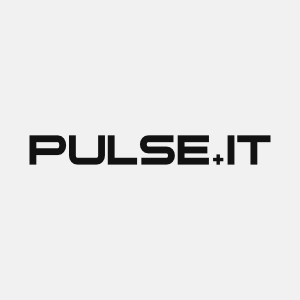
Enhancements in the 7th edition include full revisions to many entries for the 450 injectable medicines covered, including new anti-cancer drugs, 23 new monographs and five anti-venoms.

Healthcare professionals will have better access to information about their patients and the results of their referrals to the My Aged Care system under changes set to come in on July 3, while the aged care service provider and assessor portals will have a complete revamp to their user interface when release 8 of the system goes live on July 24.
There is still no resolution in sight to the problem repeatedly raised by GP groups that referrals to the system require them to send a fax or a webform, but Department of Health representatives say the changes will allow clinicians to act on behalf of their patients with consent, track the progress of referrals and deal directly with assessors, which will support continuity of care.
DoH officials told an industry webinar today that along with a host of changes to the user interface, the MyAssessor app is also being improved to allow most of the assessment to be done offline while face to face with the client, and aged care organisations struggling to cope with managing numerous AUSkey accounts can instead use the VANguard Federated Authentication Service (FAS), which functions much like single sign-on.
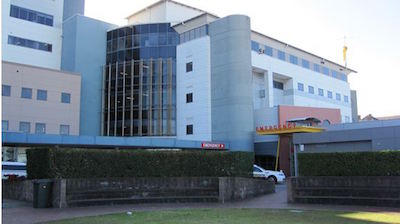
The NSW government will spend $7.7 billion over the next four years on new hospitals and hospital redevelopments, including $720 million for the ageing Prince of Wales at Randwick, as part of a $23 billion spend on health just in the next year alone.
That includes the first few tranches of the $536 million over eight years promised to eHealth, including $29m for electronic medications management, $6 million for corporate systems and $4.5m for ICT for NSW Ambulance in 2017-18. There is also $73m for the year for the continued roll-out of the Cerner electronic medical record (eMR), the HealtheNet clinical data repository and upgrading digital infrastructure.

The WA government has appointed former director-general of NSW Health and former chair of the federal digital health taskforce steering committee Robyn Kruk to oversee a panel investigating a review of the WA health system, which aims to embrace innovation and technology and improve financial sustainability.
The Sustainable Health Review, due to report by March 2018, will look at how to rein in expenditure growth in the health budget, which the government says accounts for more than half of every new dollar spent in the last four years.
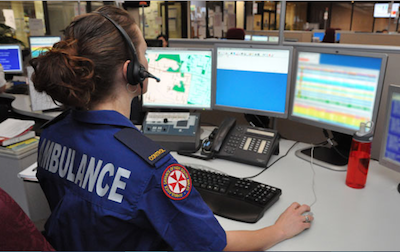
eHealth NSW has secured extra funding totalling $536 million over the next eight years for a swathe of digital health initiatives, including expanding its electronic medications management (eMeds) program, completing the roll-out of phase two of its electronic medical record (eMR2) and expanding the HealtheNet clinical data repository to allow clinicians to see pathology results anywhere in the state.
There is also funding for new initiatives such as integrating the NSW Ambulance eMR system to emergency department eMR solutions, enhancing the ambulance eMR and providing additional mobile devices to frontline paramedics, and migrating the NSW Ambulance computer-aided dispatch solution to the government data centre (GovDC).
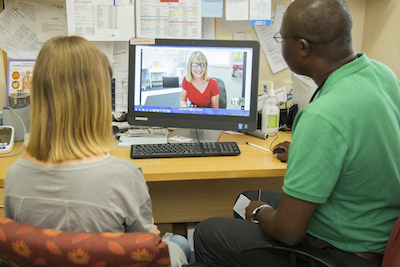
A survey of more than a thousand GPs on their attitudes towards the use of technology in general practice has found that the majority are optimistic about technology's ability to improve productivity and care coordination, but numerous barriers remain, including funding, patient confidentiality and a lack of integration with other systems.
For example, the survey found that just three in 10 GPs use telehealth, mainly for conducting video consults with other healthcare practitioners or for training, but if funding was available, 65 per cent would be likely to use telehealth services in the next three years.

Telehealth experts have one week left to submit abstracts for the annual Successes and Failures in Telehealth (SFT-17) conference, organised by the University of Queensland’s Centre for Online Health in conjunction with the Australasian Telehealth Society (ATHS).
The conference returns to Brisbane this year after a successful joint conference held in conjunction with Global Telehealth, the Health Informatics New Zealand (HiNZ) Conference, and the NZ Nursing Informatics Conference in New Zealand last year.

The Midland region clinical portal (MCP) is due for go-live next month, the first phase in the wider, $109 million eSPACE program that will see the five Midland DHBs developing a single point of access for clinical information across the region.
The MCP will provide a unified view of the DHB's existing workstations, which are a mixture of the HealthViews clinical portal, the Bay of Plenty's CHIP system and an Orion Health clinical portal at Taranaki DHB.

Planning for a detailed business case for the proposed single electronic health record (EHR) is the next step following the endorsement of the preliminary indicative business case by the NZ government last month.
The topic will also be discussed by ministers at the State Sector Reform and Expenditure Control (SEC) meeting this week, with a Cabinet paper and supporting documents in circulation.

Pulse+IT's weekly round-up of international health IT and eHealth news for the week ending June 18:
Apple iPhone medical record integration plans
CNBC ~ Christina Farr ~ 14/06/2017
A secretive team within Apple's growing health unit has been in talks with developers, hospitals and other industry groups about bringing clinical data, such as detailed lab results and allergy lists, to the iPhone.
The NSA has linked the WannaCry computer worm to North Korea
Washington Post ~ Ellen Nakashima ~ 14/06/2017
The National Security Agency has linked the North Korean government to the creation of the WannaCry computer worm that affected more than 300,000 people in some 150 countries last month, according to U.S. intelligence officials.

In a week in which many of we colonials took a day off to celebrate the birthday of an elderly but still very chipper lady in England – excluding New Zealand, which took it last week; WA, which has to wait until September; and Queensland, of course, which holds it in October, while the lady in question was born in April – it was good to see a new report being launched with much fanfare at Parliament House offering up a roadmap for how technology should be deployed to help support older people to remain independent for as long as possible.
The report was a very worthy one but to be honest, we have seen these things before. There was the 2012 Pathfinder project, which investigated what would be required to connect the aged care industry to the PCEHR, and which sank without a trace, and after that there was the 2014 Digital Care Services IT blueprint, co-written by Accenture, which also fell into a hole and never came out again.

Pathology and diagnostic imaging provider Sonic Healthcare is about to go into a technical proof of concept trial with the Australian Digital Health Agency to map the processes and workflows for uploading pathology and radiology reports to the My Health Record, leading the way for other providers to adopt over time.
Sonic recently announced that its subsidiaries Sullivan Nicolaides Pathology and Queensland X-Ray would be the first private providers to connect to the national system, intending to begin uploading reports for patients in Queensland. Before that happens, however, there are still some technical and practice workflow issues to resolve, with GP practice management software vendors making some adjustments to their systems and some modifications also required to laboratory software.
Sonic Healthcare CIO Peter Joseph told Pulse+IT that the proof of concept trial would map out the whole process of requesting, receiving and uploading test reports, from the creation of the order, its transmission to a laboratory, the receipt of the order and collection of the sample, and its processing. It will also cover the reporting of the result back to the requesting doctor and the upload of a report to the My Health Record with the patient's consent.

Almost one in five Australians now have a My Health Record as the system nears its fifth year in operation, with the number of hospital discharge summaries uploaded reaching one million and shared health summaries increasing at a steady rate.
The latest figures also show that pathology and diagnostic imaging reports from the public sector are starting to flow, albeit in very small numbers, along with specialist letters.

The aged care industry should develop a technology initiative fund to help aged care providers purchase or develop technologies to integrate into their care services, a new report recommends.
The Aged Care Technology Roadmap also recommends that interoperability be standardised across the sector, technology capability be considered an essential requirement of aged care delivery, the embedding of technology expertise in assessment and care planning, and the development of strategies to increase the technological literacy of both consumers and the aged care workforce.
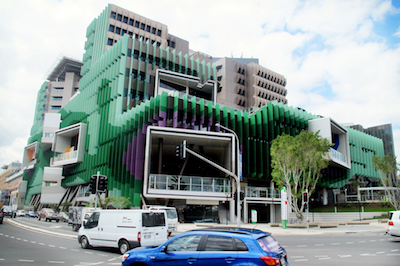
The Queensland government has allocated an extra $56.7 million over two years in today's state budget to continue the roll-out of the state's integrated electronic medical records program (ieMR) with a view to having the Cerner system up and running in 24 hospitals by 2020.
Announcing an overall health budget for 2017-18 of $16.6 billion, Queensland Health Minister Cameron Dick also announced $112.2m over four years for forward planning on the redevelopments of Logan, Caboolture and Ipswich hospitals and $128.4 million over four years to redevelop or replace Kingaroy, Blackall and Sarina hospitals.

The 292-bed Coffs Harbour Health Campus on the NSW mid-north coast and the 627-bed St George Hospital in Sydney have both gone live with the state's new electronic Record for Intensive Care (eRIC), based on the MetaVision system from iMDSoft.
The roll-out follows a pilot implementation at Port Macquarie Base Hospital last year, with all 43 ICUs in NSW to receive the system over the next few years. Blacktown Hospital is set to go live at some stage this year.
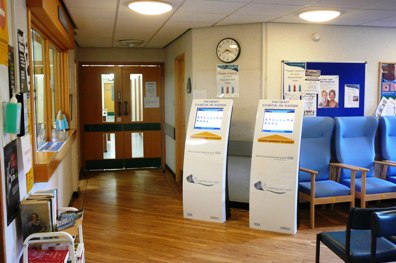
Sonic Healthcare co-founder Michael Boyd has moved to a non-executive role at Jayex Healthcare, the patient engagement technology vendor that he helped list on the Australian stock exchange in late 2015.
Mr Boyd has moved to the more traditional chairman's role at the company while the CEO of its UK arm, Nick Fernando, takes up the reins of the entire listed entity. While Jayex's headquarters is in Australia, the UK market is by far the company's largest.

The Aged Care Industry IT Council (ACIITC) will launch a new technology roadmap for the Australian aged care sector in Canberra tomorrow.
Developed by the Flinders University Medical Device Research Institute on behalf of ACIITC, the roadmap is expected to provide an outline of how technology can help ensure older people are able to remain independent for longer with choice and control over the support services they receive.

Pulse+IT's weekly round-up of international health IT and eHealth news for the week ending June 11:
Electronic health records to be rolled out despite data concerns
Irish Times ~ Kevin O'Sullivan ~ 09/06/2017
Electronic health records are to be rolled out for everyone availing of Irish healthcare services and will ensure better outcomes for patients, the chairman of the Government’s eHealth project, Prof Mark Ferguson, has said.
Mayo Clinic sets sights on precision decision support at point-of-care
Healthcare Informatics ~ Mike Milliard ~ 07/06/2017
Licensing partnership with 2bPrecise aims to bring genomics into the EHR workflow.

Remember 2012? No, neither do I, but this time five years ago the biggest deal in eHealth was the imminent launch of a fab new national IT project that heralded the dawn of a new age in healthcare. This system would link health professionals together, improve the flow of information throughout the entire health system, save the government eleventy billion dollars in needlessly duplicated lab tests, and better yet, allow patients to see their own health information for the very first time.
And it was just four years ago that the minister for health at the time, Tanya Plibersek, fronted up at the HIC conference and announced a massive $8 million grant to NEHTA to get pathology and diagnostic imaging onto the system. This was greeted as big news by Pulse+IT and by everyone else. Test results were going to be the deal breaker, the game changer, the thing that would put the PC in the PCEHR.

A devolved governance model and multiple health services at different stages of digitisation with different electronic medical record vendors means Victoria has struggled to link information across the public health system thus far.
In pursuit of the state's Health 2040 vision of person-centred health and wellbeing, the Victorian Department of Health and Human Services (DHHS) is keen to change all that, working on a project to develop a statewide digital health identifier that functions as an indexing service to align local health service medical record numbers (MRNs) with the national Individual Healthcare Identifier (IHI).

With Queensland's flagship digital hospital in operation for 18 months and the technology rolling out across the state, eHealth Queensland is taking a look at other international trends to build upon, including virtual hospitals and the potential of capacity command centres like the one that opened at Johns Hopkins in Baltimore late last year.
Equipped with an array of real-time and predictive information systems from GE feeding a huge bank of monitors and dashboards in a room staffed by 24 people, the centre (pictured) has seen massive improvements in patient flow and patient care in a hospital that already boasts it is the best in the world.

User testing for the cervical cancer screening element of the National Cancer Screening Register (NCSR) is due to begin in mid-July, with the first jurisdiction to migrate to the new system in October and the full system on track in time for the delayed start to the cervical cancer renewal program on December 1, Department of Health officials say.
Work on moving the paper-based bowel cancer screening program to the new register, which was supposed to go live on March 20, has been pushed back to next year as the department and program vendor Telstra Health concentrate fully on the more complex cervical cancer program, the delay to which is costing $13.5 million.
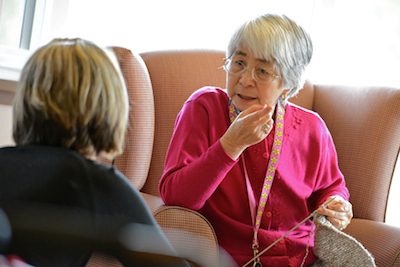
Complaints continue to flow about the administrative burden caused by the My Aged Care system, including the lack of an integrated referral form for GPs, a lack of transparency around the progress of assessments and a lack of consultation with referring doctors when dealing with the My Aged Care call centre.
In a submission to the latest round of independent research carried out by AMR into the My Aged Care platform, due to be released by the Department of Health next month, the Australian Medical Association (AMA) repeated its call for the healthcare provider referral webform to be integrated into practice management software.
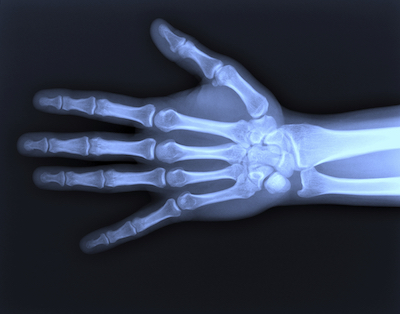
Sonic Healthcare subsidiary Queensland X-Ray (QXR) will be the first private diagnostic imaging provider to upload radiology reports to the My Health Record, following in the footsteps of another Sonic entity, Sullivan Nicolaides Pathology, which last week became the first private pathology provider to link to the system.
The Australian Digital Health Agency is also extending its offer to other diagnostic imaging providers to assist them in connecting to the My Health Record. Reports are currently being uploaded from public hospitals in the Northern Territory, with other states soon to follow.

Cancer care provider Icon Group has signed on with IBM Watson Health for its Watson for Oncology cognitive computing platform, which will allow oncologists to access evidence-based, personalised treatment options for seven types of cancer.
Icon Group, which includes six Icon Cancer Care day hospitals in Australia and a private cancer care facility at Wakefield Hospital in Wellington, along with 11 radiation oncology centres, three integrated cancer centres, medication management provider Epic Pharmacy and chemotherapy compounder Slade Health, will be made available to oncologists within Icon Group’s Australian network, enabling them to access the massive volumes of cancer research and literature currently available.

The WA Department of Health's Health Support Services (HSS) is looking to set up a panel of secure messaging service vendors as part of a move towards an enterprise-wide mechanism for securely transmitting messages between public hospitals and healthcare providers, particularly GPs.
HSS has issued a request for offer to become part of the panel, which will involve signing heads of agreement with HSS and complying with a range of reporting requirements. Vendors must also comply with HL7 and secure message delivery (SMD) standards and specifications, and maintain a provider directory service.
Queue management specialist NEXA has rolled out a patient flow management system integrated with the Mosaiq oncology information system at the Nelune Comprehensive Cancer Centre (NCCC), located in the new Bright Alliance Building at the Randwick hospitals campus in Sydney.
The $114 million building has brought together diagnostic and treatment services into one centralised facility at the campus, which houses the Prince of Wales Hospital (POWH), the Royal Hospital for Women and the Sydney Children’s Hospital.

Pulse+IT's weekly round-up of international health IT and eHealth news for the week ending June 4:
Why the eClinicalWorks settlement may rattle the industry
Health Data Management ~ Fred Bazzoli ~ 01/06/2017
The legal settlement between the Department of Justice and eClinicalWorks is a jolt to the system for vendors of electronic health records systems.
Beverley Bryant calls for NHS Digital’s strengths to be recognised
Digital Health News ~ Jon Hoeksma ~ 01/06/2017
Beverley Bryant, NHS Digital’s outgoing director of digital transformation has called for the contribution of the agency to be fully recognised and valued by its commissioner NHS England.


Sydney's 1000-bed Westmead Hospital has successfully completed the roll-out of the 'Paper-lite' project, implementing the Cerner electronic medical record known in NSW as eMR2 and taking the number of hospitals now using the system to 145.
The state's electronic medications management (eMeds) system has also rolled out to 13 hospitals out of a target of 58, and the new electronic record for intensive care (eRIC) system, which uses the MetaVision solution from iMDsoft, is set to go live at seven hospitals before the end of the year, having been piloted at Port Macquarie Base Hospital last October.
eHealth NSW CEO/CIO Zoran Bolevich told a conference in Sydney yesterday that the state was one year into its 10-year eHealth strategy, which aims to roll out a number of core clinical systems in addition to completed projects such as the Community Health and Outpatients Clinics (CHOC) project, which extended the eMR to out-of-hospital healthcare provision.

Queensland-based precision dosing software company DoseMe has entered the US market, setting up offices at the Texas Medical Center in Houston and Medical Alley in Minneapolis and planning to launch its US-focused solution at the American Society of Health-System Pharmacists (ASHP) meeting being held in Minneapolis this weekend.
The company says DoseMeRX is built on the same algorithms that underpin the DoseMe platform of real-time dose-related clinical decision support, with tailored enhancements for the US health and regulatory environment.

The Australian Digital Health Agency (ADHA) is hoping to move the Australian health system into a more interoperable environment within the next five to 10 years, issuing a request for tender (RTF) yesterday for a partner to develop a strategic framework offering a practical approach towards interoperability.
The successful tenderer will be required to do an international literature search and review the current state of interoperability efforts in healthcare and other industries, both here and overseas, and to provide a written overview of interoperability principles and the necessary component parts of an interoperable health system. The reports will be due by the end of August.

Victoria's Peninsula Health is set to go live in the next month with inbound referral capability, which will see local GPs sending eReferrals to Frankston Hospital's outpatients clinics using Global Health's ReferralNet secure messaging platform.
The new capability is part of a wider referrals management project that has seen discharge summaries being sent electronically from Frankston Hospital's Cerner EMR to GPs and specialists throughout the Mornington Peninsula using ReferralNet since last December.
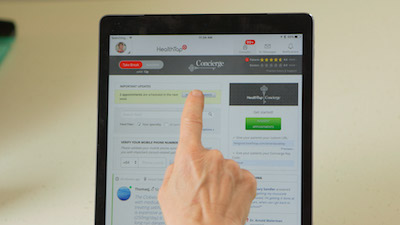
US telehealth firm HealthTap will open an Asia-Pacific office in Hamilton to help service its existing relationship with Waikato District Health Board on its pioneering SmartHealth initiative, and to promote its HealthTap Compass offering to employer groups in New Zealand.
The company has also hired former IBM and HP project manager Anita Hogan as its general manager for New Zealand. Irish-educated Ms Hogan previously ran Microsoft's cloud program in Europe.

Sonic Healthcare Group member Sullivan Nicolaides Pathology (SNP) will be the first private pathology provider to upload pathology reports directly to the My Health Record, in what will be a major advance for the clinical value of the national system.
Sonic has been working with the Australian Digital Health Agency (ADHA) to connect its systems to the MyHR, with Queensland-headquartered SNP set to begin uploading reports from tests carried out in north Queensland, followed by the Nepean area in western Sydney and northern Tasmania.
ADHA CEO Tim Kelsey told a conference in Sydney today that the agency will open an offer to the entire pathology and diagnostic imaging industry on Friday to help software vendors servicing the sector to connect to the system.


The federal government is projecting it will save $136.8 million over the next four years through a reduction in duplication of pathology and diagnostic imaging tests due to the use of the My Health Record, with the remaining $112m claimed in this month's federal budget coming from unclear 'health system efficiencies'.
Department of Health officials told the Senate community affairs committee in an estimates hearing last night that modelling it had done based on the system becoming opt-out, with an assumption of a higher take-up by healthcare practitioners, showed savings will begin to accrue from year two of opt out.
This has been calculated at $305 million over four years and included in this month's federal budget as an offset to the new spending of $374.5m, a move the federal opposition described as “incredibly speculative”.
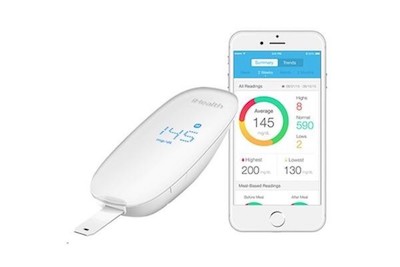
ASX-listed medication adherence app vendor MedAdvisor has signed up with mHealth pioneer iHealth to integrate its apps and medical devices with MedAdvisor's new pharmacy-focused PlusOne platform.
iHealth is best known for its wireless home monitoring devices such as blood pressure and blood glucose monitors, body analysis scales, pulse oximeters and activity and sleep trackers, as well as its MyVitals app, which has been integrated into Apple's HealthKit.
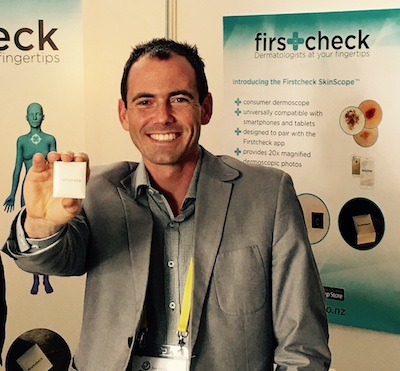
Kiwi-developed early skin cancer detection service Firstcheck has been added to the OneStop Health network used by leading UK-based artificial intelligence app Your.MD, and has also signed on with Australian skin cancer laboratory InfinityPATH to explore complementary technologies and services.
Firstcheck, which was started up by former lawyer Hayden Laird in 2015 to provide a cheaper, more accessible early detection system for skin cancer, launched its app-based teledermatology service in New Zealand late last year and in Australia in February.

Pulse+IT's weekly round-up of international health IT and eHealth news for the week ending May 28:
How ECMC got hacked by cyber extortionists – and how it's recovering
The Buffalo News ~ Henry L Davis ~ 20/05/2017
It was 2 a.m. Palm Sunday. Computer screens across Erie County Medical Center flashed white with bright red words: "What happened to your files?"
InterSystems, Epic land more global business than any other EHR vendors
Healthcare IT News ~ Bernie Monegain ~ 23/05/2017
On the EHR world stage, InterSystems and Epic won more new hospital contracts in 2016 than any of their rivals, according to a new KLAS report: “Global EMR Market Share 2017.”

As noted cybersecurity expert Donald Trump warned just last year, we all have to do better on the cyber, and we certainly have to get tough on cyber and cyber warfare. As the self-described father of a 10-year-old who is unbelievable at the cyber, Mr Trump accepted that it “might be hardly doable” because the security aspect of cyber is very, very tough, but nonetheless we do have to try.
Quite right, Donald. Just last week we were discussing in these very pages the global fright caused by the WannaCry scare, and we asked the local health IT industry if it thought our hospitals were prepared for a large-scale ransomware attack.

Technicians from firewall vendor Check Point are examining Queensland Health's systems to try to uncover why some clinical staff have been denied access to the integrated electronic medical record (ieMR) at five hospitals this week.
eHealth Queensland CEO Richard Ashby said the problem became noticeable on Monday night and saw up to 10 per cent of requests for access to the ieMR denied. Wards at Princess Alexandra Hospital in Brisbane have reverted to paper to ease the load, but the emergency department and ICU were still using electronic systems, he said.

Victoria's Department of Health and Human Services (DHHS) has made good progress on planning more effectively for integrated clinical ICT systems since an infamous auditor-general's critique in 2013, but it still needs to do some work on strategic planning for investments and on developing an ICT assets inventory for the sector, a follow-up report has found.
The 2013 Clinical ICT Systems in the Victorian Public Health Sector report severely criticised the planning behind the $323 million HealthSMART project, which aimed to roll out the Cerner electronic medical record to 19 hospitals as part of a suite of mandated products.
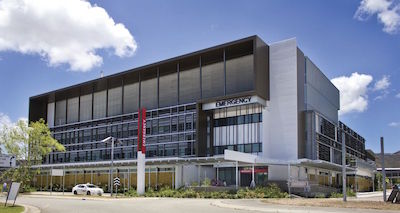
An attempt to protect Queensland Health's systems from being affected by the WannaCry ransomware attack appears to be causing problems for clinicians logging in to the integrated electronic medical record (ieMR) at five Queensland hospitals.
The issue was not caused by an actual cyber security attack, eHealth Queensland says, and emergency departments and theatres are running as normal.
Update: eHealth Queensland issued a statement this afternoon saying the problem may have to do with extra measures taken to protect systems against WannaCry on May 13.

The Australian affiliate of HL7 International has released a localised version of the HL7 version 2.4 standard for pathology messaging, which includes the work on units of measurement and terminology undertaken by the Royal College of Pathologists of Australasia's PITUS project.
It also includes the use of individual healthcare (IHI) and organisational and practitioner identifiers, which will be necessary when connecting systems to the My Health Record.
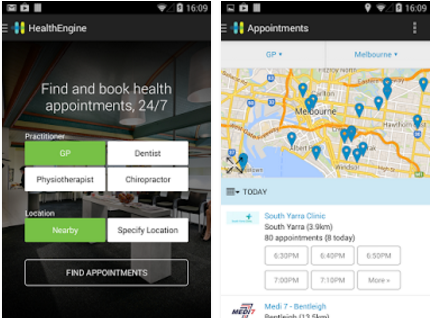
Online appointment booking and directory service HealthEngine has added a connection to the My Health Record on its app, allowing consumers to log on to and view their record through HealthEngine's profile section.
HealthEngine is the second third-party app to link to the My Health Record following the release of the Healthi app from Chamonix earlier this year. Both apps provide access to My Health Record through the myGov website in a seamless fashion.

Former CSC and IBM staffer Mark Sabotti has been appointed director of Unisys' life sciences and healthcare practice in the Asia Pacific region.
Mr Sabotti will be in charge of expanding the company's business in the region, which represented 14 per cent of the company’s global revenue in 2016.

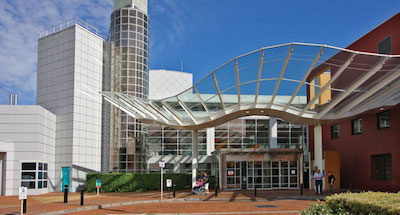
The Children’s Hospital at Westmead in Sydney has added Irish company Oneview's Connect mobile app to its existing inpatient platform, aiming to link patients and their families to their carers at the pre-admission and post-discharge stages.
Oneview Connect displays alerts about upcoming appointments, assessments and patient-specific education content on the patient's favourite device, and allows patients and their families to respond.
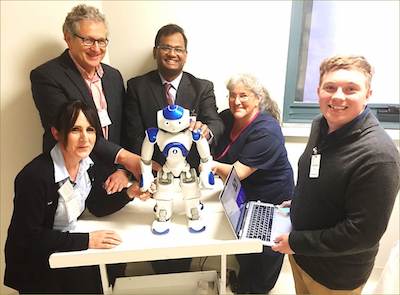
Clinical staff at North West Regional Hospital in Tasmania have been posing as patients as part of an experiment to see whether people will accept a humanoid robot as a care provider.
While robots have been used in the aged care setting before and for rehabilitation, the new generation of humanoid robots are being looked at to see whether they can become assistants to clinicians in the acute care setting, and perform some routine tasks currently carried out by doctors and nurses.

Urgent action is needed to reconfigure the health information workforce so shortages do not affect the implementation of digital health initiatives, the five peak bodies representing the Australian health information sector say.
The organisations held a workforce summit last year to develop an action plan for the future workforce and to encourage industry and government support for the development of national capability frameworks.

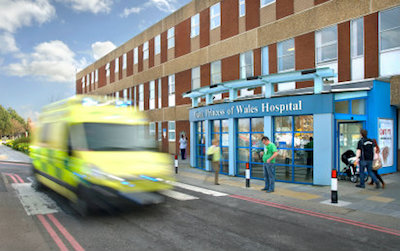
Pulse+IT's weekly round-up of international health IT and eHealth news for the week ending May 21:
NHS denies widespread Windows XP use
Healthcare Info Security ~ Mathew J Schwartz ~ 14/05/2017
The National Health Service, or NHS, has vigorously denied reports that its systems were so widely infected on account of widespread Windows XP use.
Epic CEO Judy Faulkner #6 Forbes richest self-made women list
Healthcare IT News ~ Bernie Monegain ~ 17/05/2017
Epic Systems founder and CEO Judy Faulkner is No. 6 on the 2017 Forbes list of richest self-made women, logging a $2.5 billion net worth.

As the dust began to settle on last week's interesting federal budget and we began to digest the interesting news that the My Health Record will become opt-out earlier than expected, news suddenly started to erupt about the WannaCry ransomware attack, which caused a flurry of outraged squawking when it seemed to knock a whole lot of UK hospitals offline.
As soon as the news broke out so did the heroes of the day, the masked infosec avengers who took to social media to tut-tut about how terrible it was that the NHS still seemed to run on Windows XP. It later emerged that it doesn't really and that the affected hospitals seemed to have their business continuity plans in order, but that didn't stop every alleged expert from demanding that hospitals update all their software to Windows 10 overnight, just like they do on their home PC.

The Australian government has signed an agreement with Germany to share information about digital health as part of a bilateral pact declared at the first ever G20 health ministers' meeting in Berlin overnight.
Signed by Australia's Minister for Aged Care and for Indigenous Health Ken Wyatt and the German Minister for Health Hermann Grohe, the agreement encourages sharing information on the best uses of digital health to improve the health status of populations.

Nelson Marlborough District Health Board is preparing to go live with the HealthOne shared care record, the last of the five South Island DHBs to roll out the system and provide a single source of truth accessible to all clinicians at the point of care.
NMDHB, which earlier this year also went live with the Health Connect South (HCS) system for hospital care, will roll out HealthOne to local GPs, pharmacists and practice nurses next month. Nurse Maude community nurses also have access, and the data will also be viewable in HCS for hospital clinicians.
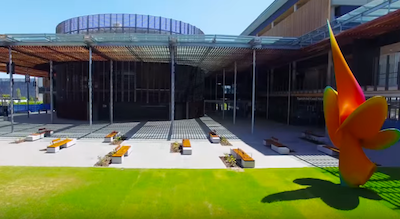

Brisbane's Princess Alexandra Hospital has seen a 71 per cent decrease in the number of duplicate pathology tests recorded since the introduction of the digital hospital version of the state's Cerner integrated electronic medical record (ieMR), part of a statewide plan to reduce all inappropriate pathology tests at ieMR hospitals by more than five per cent.
It has also seen a 38 per cent reduction in the rate of serious falls and a 59 per cent decrease in the cost of medical stationery since the new system, which has also been implemented at Cairns Hospital and is now rolling out to Mackay and Townsville, went live in November 2015.

The newly elected West Australian government has put the contracts for the Fiona Stanley Hospital and Perth Children's Hospital ICT roll-outs on a list of 26 high-profile projects to be investigated as part of a politically charged inquiry into its predecessor's handling of the state's finances.
WA Premier Mark McGowan and treasurer Ben Wyatt this week released the terms of reference for the inquiry, which will look at the decision-making processes, risks, contract terms and financial consequences for some of the state's largest projects, including Fiona Stanley Hospital – and its much criticised Serco contract – the troubled Perth Children's Hospital, which has lead in its water supply, the St John of God Midland Public Hospital, and the major IT procurements of the Department of Health.

Well-known health IT sales professional Robert Barley has been appointed as the new Asia Pacific sales director for US-headquartered information systems and EMR vendor MEDITECH.
Mr Barley was previously sales director at Orion Health and regional vice president of sales for Allscripts, specialising in large, complex and strategic sales in the health IT industry.
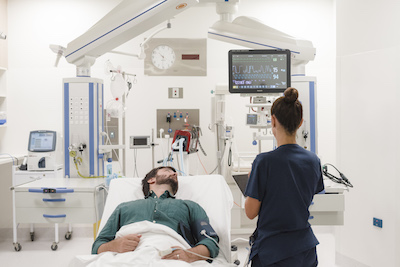
Four months after opening its doors, the clinical and enterprise ICT systems at the new $630 million Bendigo Hospital are on track, with plans for the implementation of InterSystems' TrakCare electronic medical record in full flight, a messaging platform described as a work of art rolling out, and hundreds of Microsoft Surface Pro devices being deployed for use in write-up bays, at the bedside and at home.
The jewel in the healthcare crown of regional Victoria opened its doors on January 24, with a digital medical record (DMR) using eForms technology from Vitro and a scanning solution from Kofax currently being used as the hospital gears up for the first phase of the full EMR roll-out, which is expected to get under way in November.
Bendigo Health CIO and executive director of information services Bruce Winzar said the opening of the hospital had gone pretty much without incident, with 170-odd patients being transferred from the old hospital to the new site over about six hours. They were admitted to a hospital featuring a converged network supporting a host of new enterprise-wide applications, including real-time location services, real-time automated meal ordering, new nurse calls systems, enterprise messaging and a new integration engine.

Sydney-based digital health platform provider Healthshare has released a free communication platform combining video conferencing functionality, a patient diary and clinical note capability, aimed predominantly at psychologists and other mental health professionals to use in conjunction with their patients and clients, but which is also suitable for allied health professionals and medical practitioners.
Dubbed ConnectMe, the platform is free for the time being and is being offered in light of the government's recent moves to allow Medicare-funded psychology sessions to be conducted by telehealth.
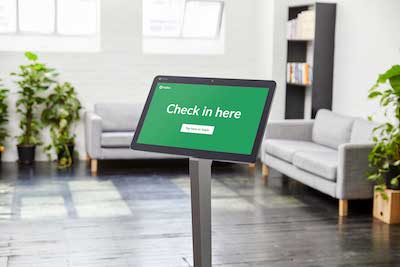
Melbourne-based health IT firm HotDoc has gone live with a new patient marketing platform called Inform, aiming to market medical practices' preventative health services such as health assessments, care plans and vaccine clinics through its SMS-based SMART Reminders technology.
HotDoc, best known for its online appointment booking system that is integrated with the market-leading practice management systems as well as its SMART Recalls and Reminders services, has also ventured into the booming check-in kiosk market, acting as a reseller for a contemporary range of “minimally invasive” kiosks that it is selling at close to cost price.

The Victorian Department of Health and Human Services (DHHS) hopes to begin standardising its telehealth services, look at developing a statewide telehealth capability and make telehealth a routine method of delivering care over the next four years.
In 2016, DHHS engaged PwC to conduct a strategic options assessment of Victorian telehealth, which led to the development of a business case to support a statewide telehealth capability that the department hopes to implement.
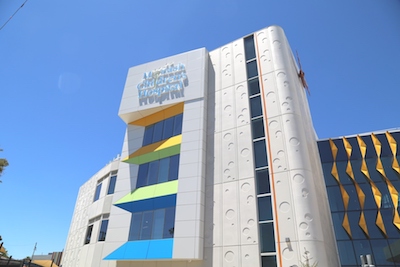
The newly opened Monash Children’s Hospital in Melbourne has launched a telesurgery service providing a direct video link between paediatric surgeons at the hospital and clinicians working in regional operating theatres and emergency departments in Gippsland.
The project will be delivered from Monash Children’s surgical telehealth centre, which is located with the hospital’s surgical simulation centre and operating suites, which will also be used to provide professional development to regional doctors remotely.

CeBIT, the Asia Pacific’s largest technology expo, will feature a digital health session on day three of its conference, being held in Sydney on May 25.
It will feature presentations by Australian Digital Health Agency CEO Tim Kelsey, eHealth NSW chief clinical information officer John Lambert and Flinders University professor of digital health systems Trish Williams.

The president of the Royal Australian College of General Practitioners (RACGP) has defended signing a 'compact' with the federal government that commits the college to encouraging the further uptake and usage of the My Health Record by doctors, despite many GPs still opposing the system.
The RACGP and the Australian Medical Association both put their names to compacts with federal Health Minister Greg Hunt last week, agreeing to encourage use of the MyHR and participation in the MBS review in return for the government lifting the freeze on indexation for GPs from next year, among other measures.

Melbourne-based Precedence Health Care has won a contract with the federal government to develop a risk stratification tool for the Health Care Homes initiative.
Precedence, which is owned by Sonic Clinical Services, a division of Sonic Healthcare, will use its cloud-based cdmNet coordinated care platform for the solution. cdmNet was initially developed to help streamline team care arrangements and GP management plans for patients with chronic illnesses and also underpins Precedence's recently launched MediTracker app.

Pulse+IT's weekly round-up of international health IT and eHealth news for the week ending May 14:
Everybody hates VistA? Not its users
Healthcare IT News ~ Jessica Davis ~ 11/05/2017
Congress has continually railed on the Veterans’ Affairs EHR for being outdated, but its users say the platform is fast, secure and gets the job done.
Plenty of buzz for AI in healthcare, but are any systems actually using it?
FierceHealthcare ~ Evan Sweeney ~ 11/05/2017
The promise of AI has hit the healthcare industry full force, in part because industry leaders and researchers are searching for ways to utilize a new ever-growing database of patient information.

It must be utterly galling to Labor leader Bill Shorten and his team that after four years of the government attacking public spending as part of its 'debt and deficit disaster' narrative, the polls prove so dire for the Coalition that they promptly turn around and steal all of Labor's more popular health and education policies.
After dumping $2.2 billion worth of unlegislated budget repair measures from the disastrous 2014 health budget, on Tuesday night the government then went full socialist, newly embracing Medicare, splashing out on medicines and even returning ownership to the state government of a hospital it “saved” in a significant electorate leading up to the 2007 election. Give us Mercy indeed.

Clinical software vendor Orion Health has appointed Mark Tisdel as its new chief financial officer, with the former PeopleSoft executive set to move from California to NZ to take up the role in June.
Mr Tisdel will join new sales, marketing and strategy manager Teri Thomas at the Auckland-based company, with its current chief operating officer Graeme Wilson stepping down from a full-time role but remaining involved in a strategic advisory capacity.

Auckland-based secure messaging vendor HealthLink's co-founder Tom Bowden is stepping aside as CEO after almost 25 years in the job, but he will remain as an executive director, focusing on industry and government relationships.
HealthLink's chief operating officer Graeme Stretch will take over the CEO's chair, promising to keep a focus on interoperability for the company, which is the dominant player in both the New Zealand and Australian secure messaging markets.

The two prime doctors' groups have both agreed to encourage uptake and usage of the My Health Record in return for a lifting of the freeze on MBS indexation, a reversal of the removal of indexation on bulk-billing incentives for pathology and diagnostic imaging, and dropping plans to lower rent for approved pathology collection centres.
In a series of “compacts” with Minister for Health Greg Hunt, the Royal Australian College of General Practitioners (RACGP) and the Australian Medical Association (AMA) have agreed to a number of stances, including supporting the MBS review process, a tightening of the current MBS after-hours items and encouraging further uptake and usage of the My Health Record.
Describing it as a “landmark agreement with government”, RACGP president Bastian Seidel said it would mean decisions would no longer be made without “engagement and agreement” from general practice first.

The $374.2 million announced in yesterday's federal budget to extend the My Health Record system to all Australians includes an additional year to fund the operation of the system, with a target of having opt-out fully implemented by December 31, 2018.
The budget papers show that the Australian Digital Health Agency (ADHA) will receive $84.5m in 2017-18 and $211.3m in 2018-19 as part of the overall package, which extends the operation of the MyHR and the national digital health infrastructure, to July 2019.

There was no federal money for a rumoured roll-out of the Electronic Recording and Reporting of Controlled Drugs (ERRCD) real-time prescription monitoring system in yesterday's federal budget, although the Pharmacy Guild is reporting that this is likely in the near future.
Instead, the Guild welcomed some contingency money released under a variance to the Sixth Community Pharmacy Agreement (6CPA) that will see community pharmacy receive $30 million to incorporate medication management programs in the Health Care Homes (HCH) trials.

The federal government has allocated $374.2 million over two years from this July to provide all Australians with a My Health Record, unless they choose not to have one.
In a surprise move in tonight's budget, the government announced the funding will be used to support the expanded roll-out of the opt-out model, to improve operations of the system and to make it easier for health providers to register for it.
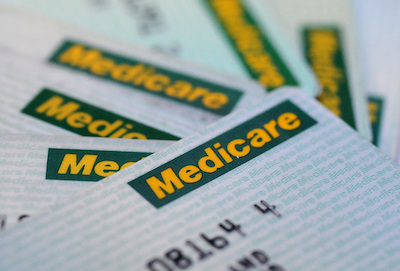
The federal government has allocated $374.2 million towards moving the My Health Record system to opt-out in tonight's federal budget.
The government says it has reached “compacts” with the AMA and the RACGP to deliver their participation in the system.
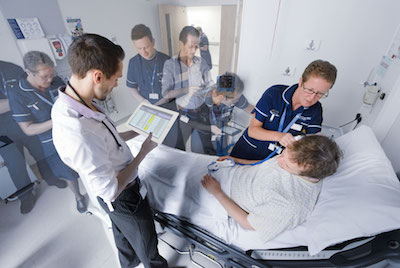
Counties Manukau District Health Board (DHB) will begin rolling out the Patientrack system for identification of the deteriorating patient in the next few months, becoming the fourth DHB to adopt the real-time observations solution in New Zealand.
Counties Manukau joins Canterbury and West Coast DHBs, which implemented the system in late 2015, and Waitemata DHB, which began a roll-out in 2016.

Update: The Pharmacy Guild and the Consumer Health Forum (CHF) have both welcomed the findings of the evaluation of the My Health Record opt-out trials, which recommend that the national system move to opt-out following overwhelming support from consumers and healthcare providers.
The Australian Medical Association (AMA) has also repeated its support for opt-out, with some caveats on the recommendations made in the report, released late last week. An AMA spokesperson emphasised that the recommendations "have no particular status and have not been endorsed by government".
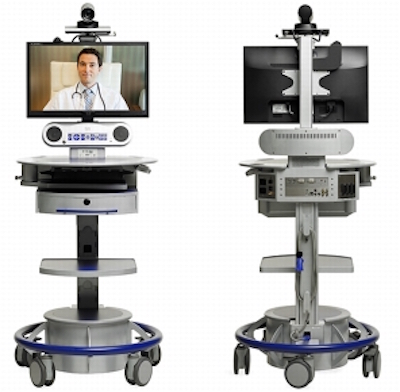
Western NSW Local Health District (LHD) has launched a community-based virtual dietetic service and is about to launch one to provide virtual physiotherapy services as part of its three-year telehealth strategy, which has seen models of care grow from five to 65 in the last 18 months as the LHD looks to build a 'virtual hospital' covering more than half of the state of NSW.
Using a combination of fixed cameras and telemedicine carts nicknamed 'Wallie' and 'Evie' for acute and sub-acute care and Healthdirect's WebRTC-based video call service for primary care, the region has been able to expand its service offering by taking advantage of the roll-out of wireless broadband and NSW Health's Health Wide Area Network (HWAN), which has replaced the old Telstra ISDN network it formerly had to use.

Irish health technology and services company Clanwillian Group has made a big splash in its first entry into the New Zealand market, snapping up the market leading pharmacy and retail software vendor Toniq.
Clanwilliam is part of the US-based Eli Global private equity firm and has a number of GP, medical specialist, pharmacy and medical billing solutions in its portfolio, with a large footprint in the UK and Ireland. Earlier this year, it bought its first Australasian asset in NSW company Medical Business Systems.

New Zealand's Ministry of Health (MOH) has relaxed its previous restrictions on the storage of personally identifiable health information in offshore-hosted cloud services, allowing healthcare providers to use the cloud as long as a risk assessment is undertaken.
The move is in line with the government's Cloud First policy, which requires government agencies to adopt cloud services in preference to traditional IT systems and removed restrictions on the use of cloud office productivity services such as Skype and Microsoft Office 365.

Pulse+IT's weekly round-up of international health IT and eHealth news for the week ending May 7:
NYC Health + Hospitals adds $289 million revenue cycle system to Epic EHR
Healthcare IT News ~ Bill Siwicki ~ 05/05/2017
The new software, now part of the health system’s $764 Epic EHR rollout, is expected to capture $142 million in added revenue annually.
NHS Digital planning “big drive” on clinical terminology standardisation
Digital Health News ~ Laura Stevens ~ 05/05/2017
Beverley Bryant, the organisation’s director of digital transformation, told delegates at the UK e-Health Week conference that such standardisation was critical for data sharing.

Either there's a big announcement of some sort in next week's budget or the Department of Health just moves at a glacial pace, but this week saw the belated release of the evaluation report on the opt-out trials of the My Health Record held last year, six months after it was submitted.
Unsurprisingly, the evaluation found in favour of opt-out, as did the vast majority of consumers and healthcare providers surveyed. Many consumers also thought it should be compulsory for providers to participate in the system – which would cause a mass revolt from doctors and is never going to happen – and they seemed to display far less concern over privacy and security than the privacy crowd pontificates about.
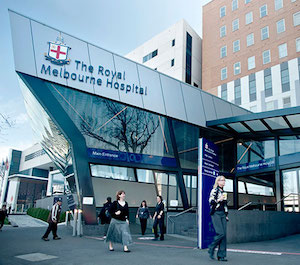
The much-lobbied-for Parkville electronic medical record project, which would see Royal Melbourne Hospital, the Royal Women’s Hospital and the Peter MacCallum Cancer Centre join the Royal Children's Hospital in implementing an Epic solution to form a precinct-wide EMR, failed to secure funding in this week's Victorian state budget.
The state government provided $5 million in last year's budget towards scoping the needs of the three hospitals to introduce an EMR. It is understood that the business case developed centred around the Epic EMR solution, which has been successfully rolled out at RCH and recently achieved Level 6 on the HIMSS EMR adoption model.

The federal government intends to move the My Health Record to an opt-out system in 2019 following a finding in its long-awaited evaluation report of two trial sites of the opt-out approach that there is almost universal support for the automatic creation of electronic health records, from both consumers and healthcare providers.
Pulse+IT has seen a copy of the evaluation report, which was delivered to the Department of Health last November but has not been made public before.

The majority of practices registered for the Digital Health Practice Incentive Program (ePIP) have met or exceeded the new target for uploading shared health summaries to the My Health Record system, according to the Department of Health, but it is not releasing the actual numbers.
New eligibility requirements of the ePIP were brought in last year, requiring that general practices upload shared health summaries for 0.5 per cent of the practice’s standardised whole patient equivalent (SWPE). This averages out to about five SHSs per GP per quarter.
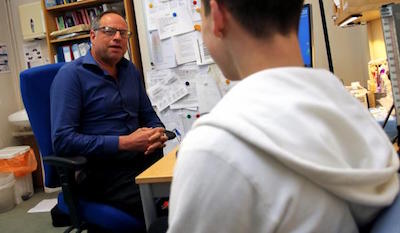
The Royal New Zealand College of General Practitioners (RNZCGP) has developed a guide for members to assist them with the legalities of providing health information to children, adolescents and their parents through a patient portal.
The college released a general guide in 2015 to using patient portals covering what sort of information should be and can be disclosed, but the new guide focuses on the differing legal considerations GPs need to take into account when releasing information to a child or to their parents.

A survey of over 2000 New Zealand GPs has found that most believe patient portals have led to an improvement in the ability of their practice to provide services to patients, with those working in practices that provide a portal to all patients rather than a restricted group the most positive.
The survey also found that Kiwi GPs predominantly use technologies such as text messaging, email, patient portals and Skype/videoconferencing for exchanging information with other health professionals and their patients rather than for more advanced purposes such as patient assessment and diagnosis, and while the volume of electronic referrals to specialists and hospitals was very high – over 75 per cent – few had access to NZ's new ePrescribing service at the time of the survey.
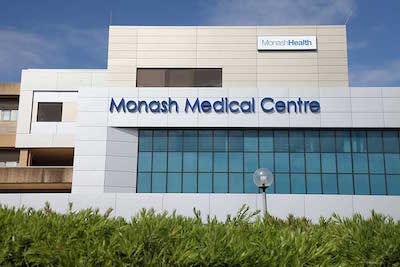
Preventative cybersecurity tools will be provided to health services, avoidable harm will be tackled and a coordinated care project given the greenlight with funding announced in today's Victorian state budget, which features a number of big construction projects, including over $160 million for inpatient infrastructure at Northern Hospital.
While details are scarce, the budget papers allocate $11.9 million to a cybersecurity and network connectivity project, which will see preventative cybersecurity controls and tools to detect suspicious cybersecurity events implemented across 29 identified Victorian Health Service networks. This will improve continuity of patient care and safety, the papers say.


The NBN company has switched on its back-up Sky Muster II satellite to help share the load with its sister satellite and provide broadband services to rural and remote parts of the country, admitting there have been service interruptions and installation problems following the launch of the first Sky Muster in 2015.
Following sustained criticism about the lack of capacity on Sky Muster from consumers, businesses and governments alike, NBN decided last year to re-purpose the second satellite, which was originally intended to be a dormant back-up service.

The CEO of Sonic Clinical Services (SCS), Malcolm Parmenter, has resigned to take up the high profile job of CEO of rival Primary Healthcare.
Dr Parmenter, who ran the Independent Practitioner Network (IPN) for 11 years in total and two years as CEO of SCS, the primary care division of Sonic Healthcare, will take up his new role at Primary in September.

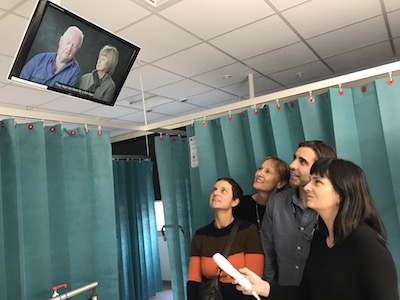
Hills Health Solutions and patient education specialist Healthily have officially launched their new joint venture, nicknamed Healthily TV, which will provide tailored patient education and entertainment channels to 18,000 hospital beds in 80 hospitals from next week.
Hills Health Solutions supplies master antenna TV (MATV) based patient infotainment technology to a number of hospitals as well as IPTV-based touchscreens from Lincor, which are set to be rolled out at the new Royal Adelaide Hospital.

Pulse+IT's weekly round-up of international health IT and eHealth news for the week ending April 30:
OpenNotes honored for liberating data despite physician pushback
Healthcare IT News ~ Jessica Davis ~ 27/04/2017
The note sharing platform won the Health Data Liberator Award at Health Datapalooza for its innovative approach to data sharing.
Open source experts to VA: Keep VistA, it can be fixed
Healthcare IT News ~ Jessica Davis ~ 27/04/2017
By advancing the EHR code base, rather than picking a commercial EHR, Veterans Affairs can modernize its proprietary software at a fraction of the cost, officials say.
Copyright © 2025 Pulse IT Communications Pty Ltd. No content published on this website can be reproduced by any person for any reason without the prior written permission of the publisher. If your organisation is featured in a Pulse+IT article you can purchase the permission to reproduce the article here.
Website Design by Get Leads AU.